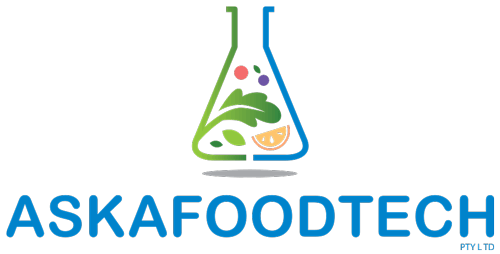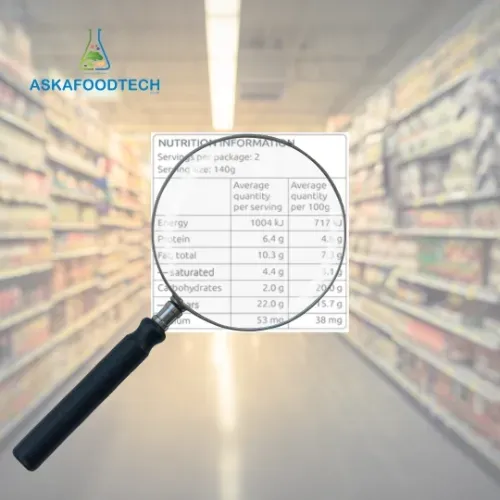Got a Question? We've Got Answers!
Whether you’re wondering about allergen labelling, shelf life testing, or best practices for launching a new product, our expert insights are here to guide you.
Got a Question? We've Got Answers!
Whether you’re wondering about allergen labelling, shelf life testing, or best practices for launching a new product, our expert insights are here to guide you.
Frequently asked questions
At ASKAFOODTECH™, we know that food science can raise plenty of questions — and we’re here to help. Our Q&A page is designed to provide clear, practical answers to common queries about food safety, product development, compliance, and more.
Have a question that’s not listed?
Contact us directly — we’re always happy to chat!
Food labelling questions
-
Q: What are the key mandatory requirements for food labels in Australia?
A: Australian food labels must include 13 essential elements for consumer safety. This includes an appropriate name, a detailed ingredient list, clear allergen and warning declarations, a date marking (use-by or best-before), lot identification, directions for storage and use, the supplier's details including physical address, country of origin, a nutrition information panel (NIP), information supporting nutrition and health claims, information regarding the use of genetic modification, information regarding the use of irradiation of a food, and a net content declaration.
-
Q. How do I know if a food product contains allergens?
A: Australian laws mandate that allergens contained within packaged foods are clearly stated on labels. Look for allergens like peanuts, tree nuts (almond, brazil nut, cashew, hazelnut, macadamia, pecan, pine nut, pistachio, walnut), milk, eggs, soy, wheat, gluten, sesame, lupin, fish, crustacea, molluscs, and sulphites present in a concentration greater than 10ppm, highlighted in the ingredient list or in a separate allergen summary. Always check carefully if you have allergies.
-
Q: What is the difference between a "use-by" date and a "best-before" date?
A: A "use-by" date means the food is unsafe to eat after that date, while a "best-before" date indicates the food's quality may decrease after that date, but it might still be safe to consume.
-
Q: How does the Nutrition Information Panel (NIP) help me make informed choices?
A: The NIP provides details on a food's energy, protein, fat, carbohydrates, and sodium content, allowing you to compare products and make healthier choices based on your dietary needs.
-
Q: How are the ingredients listed on a food label?
A: Ingredients on Australian food labels are listed in descending order of weight, starting with the ingredient present in the highest proportion at the time of manufacture. This helps consumers understand what makes up the majority of the product.
-
Q: What are "processing aids" and are they listed on food labels?
A: Processing aids are substances used during food manufacturing to assist in processing but are not present in the final product (or only remain in trace amounts). Under Australian food labelling laws, processing aids are generally not required to be listed in the ingredient list.
-
Q: What are nutrition content claims?
A: Nutrition content claims describe the presence or quantity of a nutrient in a food product, such as "low fat," "high fibre," or "good source of calcium." These claims must meet strict criteria outlined in the Food Standards Code to ensure they are accurate and not misleading.
-
Q: What is the difference between a serving size and a portion size?
A: A serving size is a standardised measurement defined on the food label, while a portion size refers to the amount of food you actually eat. While serving sizes are regulated and consistent for comparison purposes, portion sizes can vary based on individual eating habits.
-
Q: Why is it important to pay attention to serving sizes?
A: Paying attention to serving sizes is essential for accurately interpreting the Nutrition Information Panel (NIP). Understanding serving sizes helps manage portion control and supports informed decisions about your food intake.
-
Q: Where can I find information about approved food additives in Australia?
A: Information about approved food additives in Australia is available through Food Standards Australia New Zealand (FSANZ). FSANZ outlines which additives are permitted, their acceptable usage levels, and any related safety considerations.
Visit Food Standards Australia New Zealand for up-to-date information on food additives and their regulations.
-
Q: Where can I find more information about Australian food labelling regulations?
A: The Food Standards Australia New Zealand (FSANZ) website (foodstandards.gov.au) is the primary source for food labelling regulations, offering comprehensive information on the Australian New Zealand Food Standards Code; or you can book a free consultation with ASKAFOODTECH.
-
Q: What are the rules regarding country of origin labelling in Australia?
A: Most food pre-packaged products in Australia must indicate on their label where they come from. This can come in the form of a single statement Made in Australia for non priority foods such as tea, coffee, confectionery; to a bar chart indicating the percentage of Australian ingredients and a statement about where the food was grown or made.







